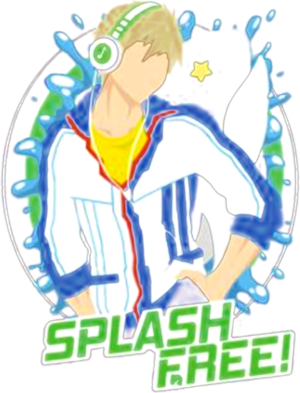

Splash Free Makoto Tachibana Free Anime shirt
$

Get this design on other amazing products
-
Unisex Tee $22.99


-
Guys V-Neck $26.99


-
Hoodie $42.99


-
Ladies Tee $22.99


-
Ladies V-Neck $26.99


-
Premium Fitted Guys Tee $25.99


-
Premium Fitted Ladies Tee $25.99


-
Sweatshirt Unisex $35.99


-
Unisex Longsleeve Tee $27.99


-
Unisex Tank Top $26.99


-
Mug $22.99


-
Youth Tee $21.99


-
Racerback Tank $26.99


-
Raglan Short Sleeve $30.99


-
Raglan 3/4 Long Sleeve $33.49


-
Raglan Long Sleeve $33.49


Splash Free Makoto Tachibana Free Anime shirt . Although the Bulls lost the first three games of the 1990-1991 season, the decade would prove to be incredibly prolific for the team. Their 1991 NBA Championship, which they won against Magic Johnson and the Los Angeles Lakers, was the first of six championship victories that they earned throughout the 90s. These six NBA titles were split between two three-peats, and the team would also set a record in 1996 for the most games won by an NBA team during a regular season. This shirt commemorates the very start of the legendary Bulls dynasty of the 90s.
Splash Free Makoto Tachibana Free Anime shirt, hoodie, sweater, longsleeve and ladies t-shirt
 (Guys Tee)
(Guys Tee) (Classic Ladies)
(Classic Ladies) (Longsleeve Tee)
(Longsleeve Tee) (Sweatshirt)
(Sweatshirt) (Hoodie)
(Hoodie)First step for printing fleece. Splash Free Makoto Tachibana Free Anime shirt Adjusting your off-contact (that’s the distance between the screen and the surface of the substrate). You always want to raise the off contact because the fleece is a thicker material, you want to make sure that the screen is not touching the fleece before you print. Make sure you have about 1/8 of an inch of distance between the garment and the screen, so the screen is able to bounce back up after you apply pressure. This will help prevent smudging the ink after it’s laid down. One hack is using a piece of cardboard or thin material to help set your off contact. Secondly, selecting the right mesh count on fleece can really impact your print one way or another. You generally want to go with a lower mesh count at least for the base layer(s). The key is to penetrate the fabric to flatten the fabric out so that you have a smooth and stable printing substrate. Layering down a screen with the low mesh count will help create a smooth surface to print on. We typically start with a 135 mesh count screen for the base layer and then use a 225 mesh count screen for the top layers. Selecting the proper adhesive is very important when printing fleece. For printing jersey knit fabrics, we would generally use a roll-on water-based tack. For fleece, we use an aerosol spray and we spray each and every platen before the garment is loaded on. This is crucial for holding registration on press. Both a web-based spray adhesive or roll-on based pallet adhesive are popular choices when printing fleece. You can always test out different adhesives to see what you prefer. Just make sure the fleece stays put on the platen. An advance tip for printing fleece is to pre flash and flatten the fabrics before the very first print goes down. Run a flash that pre-shrinks the fabric and then the flattener screen is what actually locks the fabric down onto this protective flatten. Taking this extra step before you lay down any ink ensures an ultra smooth print surface on which to lay your design. It’s a quick and easy way to take your print from good to great! When we’re printing fleece, we want to be really careful about controlling the flash temperature on the press. Why is that different than printing on a T-Shirt? Because fleece is really prone to scorching, warping and moving around on press went the flash temperatures are too intense. The general idea is that you want to flash at a lower temperature and at a slightly longer dwell time if needed. For both water based and plastisol inks, we recommend flashing at temperatures between 220 and 260 degrees. This will reduce the risk of your garment streaking or distorting on the press. The best advice for printing on fleece is actually in the design stage. Designing to the substrate is what we call it, so creating designs that are actually print-friendly on fleece. Trying to minimize color count, minimize registration, limit the amount of detail in the design, that’s going to be your best bet for getting the best results. We hope these tips were helpful! Now on to the design process. Check back here next week for the first design process!
You Can See More Product: https://bestteestore.net/product-category/trending/














